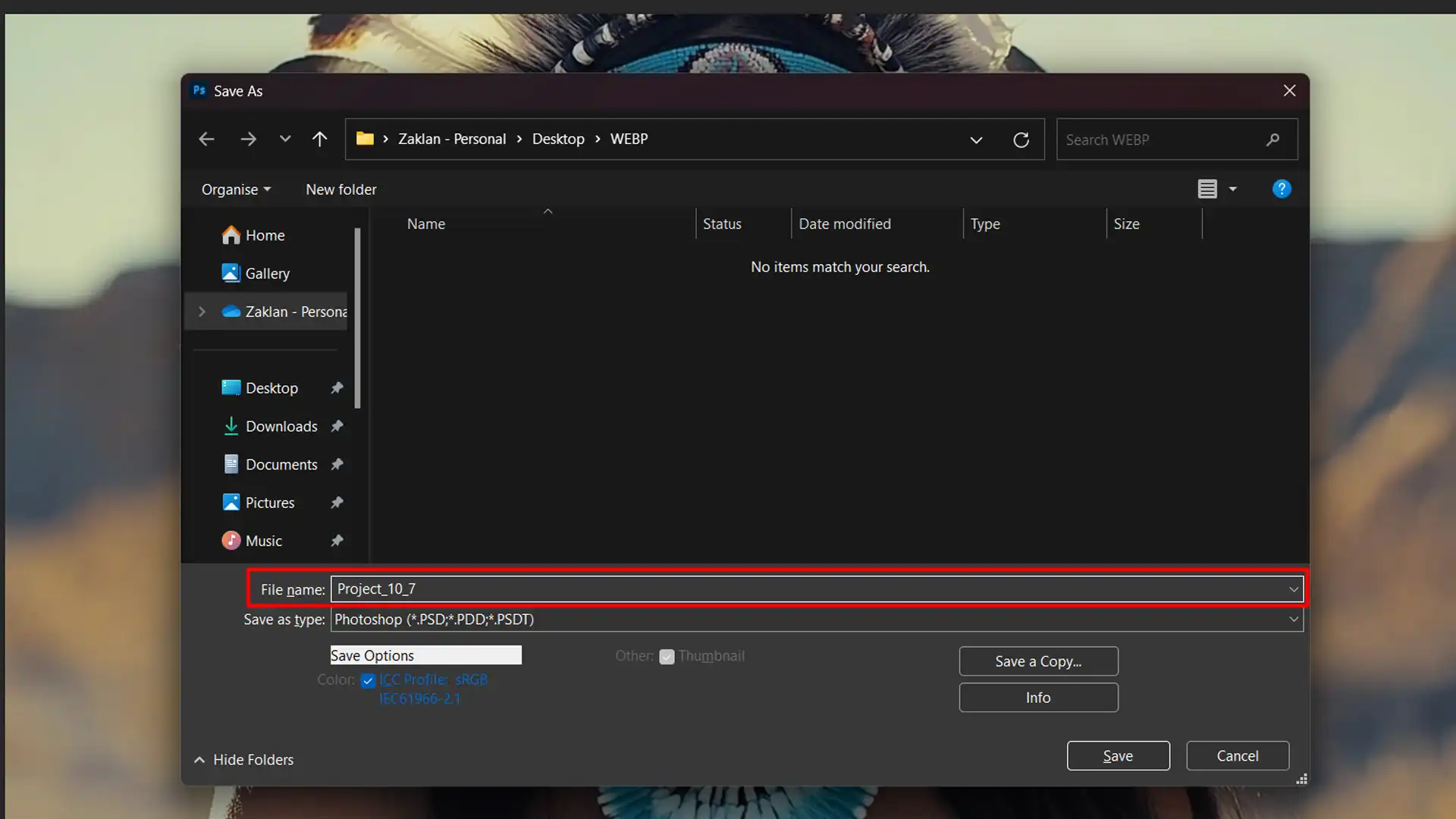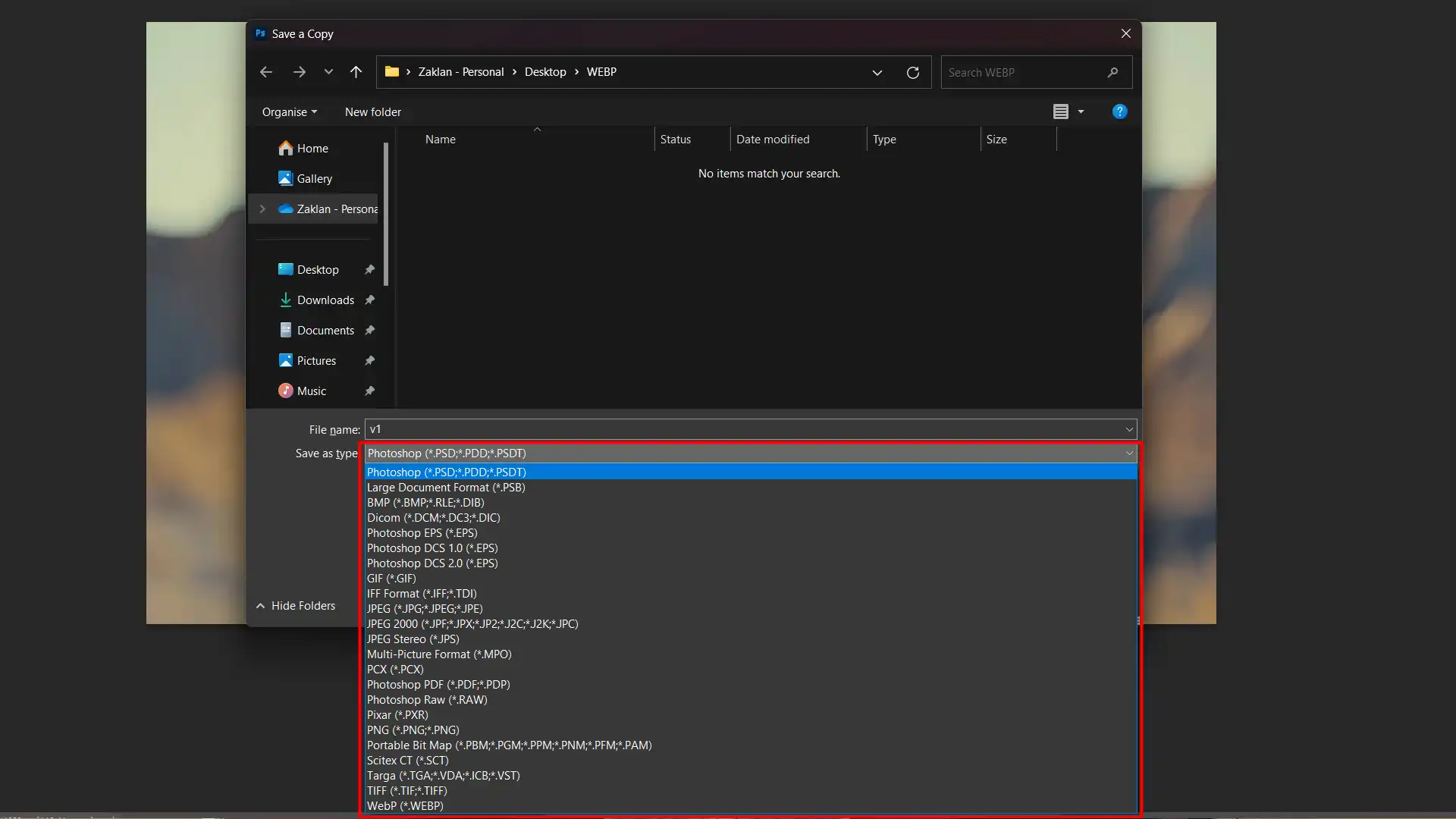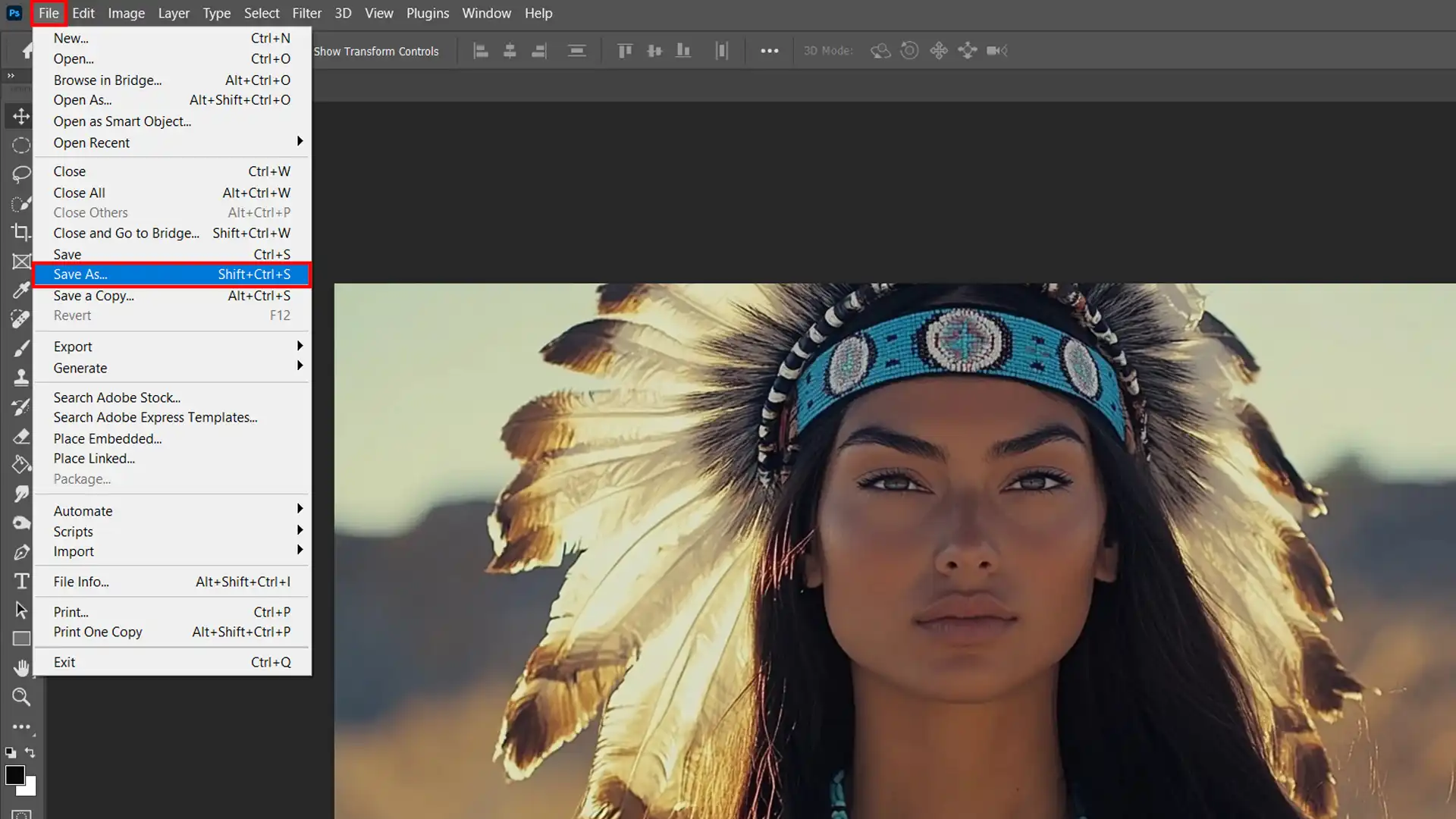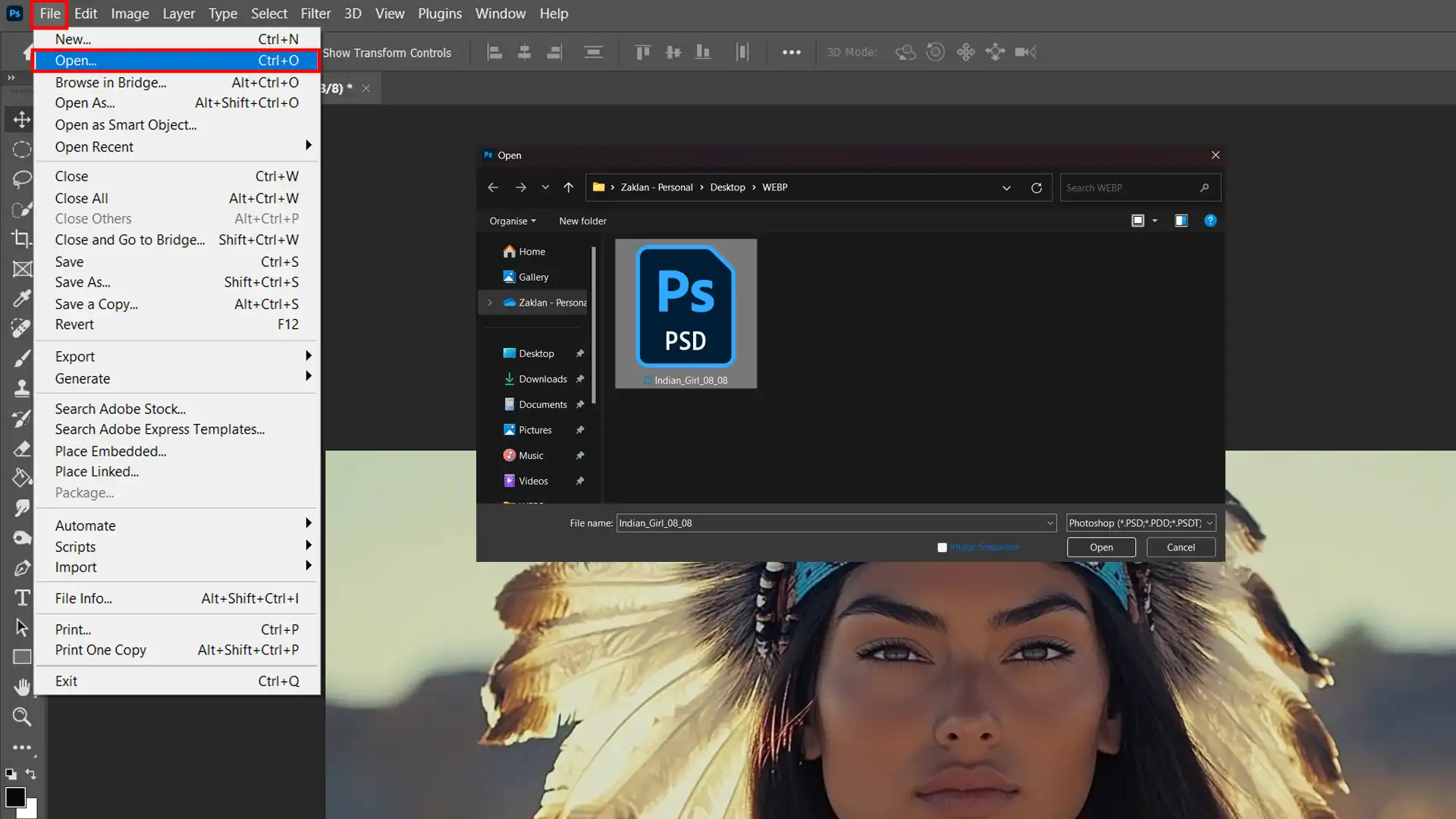
When managing projects in Photoshop, the importance of a well-organized photoshop file name cannot be overstated.
You’ve spent hours crafting the perfect design, only to lose precious time searching for your file later. Intrigued by the idea of saving time and boosting productivity?
Imagine the relief of having a clear, consistent naming system that keeps your files easily accessible.
By the end of this article, you’ll discover practical tips and best practices for naming your Photoshop files efficiently.
Let’s dive in and transform the way you manage your creative projects!
Table of Contents
Understanding Photoshop File Name
A Photoshop file label gives your document an identity. It lets you find and organize your projects quickly.
It’s like naming a folder in your computer. You wouldn’t create ten folders all named “New Folder”, would you?
Importance of Naming Your Photoshop Files
Naming your Photoshop files helps keep your work organized. Imagine trying to find a document without knowing its name.
It’s a headache. Good names make it easy to identify the project and its content.
Wouldn’t you want to avoid confusion?
Best Practices for Naming Photoshop Files

- Be Specific: Include details relevant to the project. Summarize the content.
- Use Dates: Adding the date can help track versions. For example, "Project_10_7.psd".
- Avoid Special Characters: Using symbols can cause issues. Stick with letters, numbers, and underscores (_).
- Version Control: Use v1, v2, and so on. It's easier than creating a new name each time.
- Consistent Format: Develop a naming convention. Stick to it.
Using Different File Formats
Photoshop supports many file formats, each has a unique purpose.
Let’s touch on a few:
- PSD Files: This is your working file. It preserves all layers and adjustments. The size can be large, but you retain flexibility.
- JPEG Format: Compresses your image. Great for web use. Be careful; it loses some image detail with compression.
- NEF or JPEG Format: NEF is a RAW format used by Nikon cameras, offering more editing flexibility, while JPEG is widely compatible but less flexible.
- PNG Format: Good for images with transparency. It's lossless, meaning no quality loss. Also useful in web design.
- TIFF File: Use when you need high image quality. Often used in printing where detail matters.
- GIF Format: Perfect for simple animations. Use it for small, web-based images.
Managing Page Layouts with Effective File Naming
When working on intricate page layouts, having a clear photoshop file name is vital. Proper naming conventions not only help you track different versions and elements of your layout but also ensure that related files are easily accessible and organized.
For instance, naming your files with specific details about the layout, such as “Page1_Header_Design.psd” or “Page3_FinalDraft.psd”, can significantly streamline your workflow and enhance your productivity.
This approach ensures that the keywords are seamlessly integrated into your article while adding valuable context.
Saving and Exporting Files
When you’re done, save your work in the format that suits its final destination.
For instance, use PSD for ongoing projects and JPEG for web uploads. Check the file format carefully, you don’t want to lose any work.
Handling Large Files
Sometimes, your files get big, really big.
If this is happening, try these tips:
- Reduce layers where possible. A single flattened version takes less space.
- Save in a different format. Some are smaller by default.
- Review for unnecessary items. Delete what you don't need.
File Formats in Photoshop
File formats in Photoshop determine how your images are saved, shared, and edited, each offering unique features for different needs and purposes.
Common File Formats
When working with Photoshop, you encounter several file formats.
Let’s dive into a few you will use often.
PSD Files
PSD are the default Photoshop format. They retain layers and edits, making them perfect for ongoing projects.
You won’t lose any data, but the file format size can get large.
JPEG Files
JPEG files are commonly used for web images. They offer good image quality but are compressed. This reduces the file size significantly. Remember, compression can lower quality.
For higher detail and flexibility, consider using RAW or JPEG format, with RAW providing uncompressed data for extensive editing.
PNG Format
PNG stands for Portable Network Graphics. This formats is useful for images needing transparency. PNG uses lossless compression, so you won’t lose any image quality.
TIFF Formats
TIFF files are perfect for high-quality image files. They are often used in printing. The formats supports layers and can handle large file sizes without losing quality.
GIF Format
GIF files are mostly used for simple animations online. They support a limited color range, making them ideal for basic graphics and small animations.
EPS File
EPS format is often used for vector images. This is useful when you need to scale the image without losing quality, especially in Adobe InDesign.
File Extension

File extensions help identify the format of your images. They are the suffixes at the end of file names, like .psd, .jpeg, .png, .tiff, .gif, .eps, and .pdf files are crucial for ensuring compatibility with different software and maintaining image quality.
Choosing the Right File Format
Selecting the right file format depends on your needs.
Here are quick tips to guide you:
- Web Use: For web images and photos, JPEG files work well. If you need transparency, go with PNG format.
- Ongoing Projects: Save your work-in-progress as PSD files. This keeps all layers intact for future edits.
- Printing: Use the TIFF format if you want to maintain high image quality. It's perfect for detailed print jobs.
- Simple Graphics: GIF format is your go-to. Handy for basic web animations and graphics.
Converting Between File Formats
Sometimes you need to switch formats. Photoshop makes this simple through the Save As dialog box.
Here’s how:
- Open your Photoshop files and click on "File" then "Save As".
- Select the desired file format type from the dropdown menu in the dialog box.
- Ensure settings match your needs, such as quality for JPEG files or layers for PSD files.
- Click "Save" Your file format gets converted.
Pro Tip: Always save an original file before converting. This helps you avoid losing any data. Keep that original image safe for future edits.
For those interested in more advanced editing, learning about the difference between Photoshop and Lightroom can be beneficial. Additionally, understanding different image file types will help you choose the best format for your specific needs.
Working with PSD Document
A PSD file, or Photoshop Document, is the default file format for Adobe Photoshop. It retains all your layers, text, and other editable components.
Unlike other image files, a PSD file allows you to work on your project without losing any data. You can think of it as your master copy.
Imagine drawing something in pencil instead of pen, you can still make changes!
This is particularly useful when integrating with Lightroom, as you can seamlessly manage and enhance your images across both platforms.
Advantages of Using PSD Documents
- Layer Preservation: PSD files keep all layers intact, making detailed edits easier.
- Support for Large File Sizes: They can be big, but this means you won’t lose any quality.
- Export Flexibility: This file format allows you to export your work into other file formats like JPEG or PNG.
How to Save and Open PSD Document
Saving and opening PSD documents properly is necessary to retain full editing capabilities and maintain the integrity of layered files for efficient and flexible project management.
Saving a PSD File

To save a PSD file:
- Click on "File" and then "Save As".
- In the dialog box, choose the PSD format from the dropdown menu.
- Hit save, and you’re good to go!
Opening a PSD File

Opening a PSD file type is just as easy:
- Navigate to "File" and select "Open".
- In the dialog box, locate your file and double-click.
This process maintains all your work in a single file. It’s excellent for preserving quality and making future edits.
And the best part? You can convert your PSD document into other formats when necessary.
Pro tip: Always make a backup copy of your PSD format document before experimenting with extensive changes.
It’s your safety net!
Additional Tools for Working with PSD Documents
When working with PSD, knowing how to use essential tools in Photoshop and essential tools in Lightroom can significantly enhance your workflow.
For instance, the content-aware fill in Photoshop can help you seamlessly remove unwanted elements from your images.
Additionally, understanding Photoshop shortcuts and Lightroom shortcuts can save you a lot of time and make your editing process more efficient.
Best Practices for Organizing Photoshop File Name
Adopting best practices for organizing Photoshop files ensures efficient workflow management and easy retrieval of individual layer, version history, and project settings
| Best Practice | Description | Example |
|---|---|---|
| Descriptive File Naming | Name files to reflect their components and elements. | “ProjectName_Layer1_Header.psd” |
| Version Control | Save different versions with descriptive names to track progress and edits. | “Design_v1_Initial.psd” / “Design_v2_Updated.psd” |
| Camera Settings in File Names | Incorporate camera details in file names for easy reference. | “Portrait_Shoot_2024_CanonEOS5D.psd” |
Managing Individual Layers and Layer Information
When working with Photoshop, effectively managing individual layer and their layer information is crucial for maintaining an organized workflow.
Each layer might contain different elements or adjustments, making it important to name your files in a way that reflects these components.
For example, naming your file “ProjectName_Layer1_Head.psd” can help you quickly identify and access specific layers.
Proper file naming also aids in keeping track of layers information, ensuring that you know exactly what each layer contains without needing to open the file.
Pro Tip: Utilize background layer techniques for an easier workflow.
Tracking Version and Edit History
Maintaining a clear record of version changes and edits is vital for project management.
As you make adjustments, saving different versions with descriptive photoshop file name such as “Design_v1_Initial.psd” and “Design_v2_Updated.psd” can help you track your progress and revisit earlier stages if needed.
This practice not only keeps your files organized but also ensures that you can easily identify the most recent edits and their respective versions.
Not just for complex projects, version control applies even in simple edits.
Save a copy before making drastic changes. It’s helpful. Whether you’re dealing with PDFs, PSDs, or EPS files, version control is essential.
Trust me, future you will thank present you.
Configuring Settings for Optimal File Organization
Settings within Photoshop can impact how you organize and save your files. For example, configuring your camera settings before taking photos can affect how you later handle those images in Photoshop.
Additionally, setting up your workspace and file-saving preferences on a Mac can streamline your workflow and enhance file management.
Ensure that your settings are consistent with your naming conventions to maintain order across your projects.
Handling Photos Projects and Camera Settings
When dealing with photo projects, incorporating camera details into your photoshop file name can significantly enhance organization.
For instance, if you’re working on a photos shoot with specific camera settings, you might name your files “Portrait_Shoot_CanonEOS5D.psd” to reflect the equipment used.
This practice not only helps in organizing your files but also aids in referencing the camera settings used for each photo, making it easier to replicate or adjust as needed.
Additionally, including camera RAW specifics in your file names ensures you can quickly identify and manage the unprocessed image data, facilitating a smoother editing workflow.
Efficient File Management on a Mac
Effective file management can be streamlined with the right naming conventions.
Use clear, descriptive file names that incorporate relevant details such as individual layers, version numbers, and edit history to ensure your projects are well-organized and easily accessible.
Organizing Your Files
Let’s start with the basics, organizing your files.
You’ve been working all day on a project, and suddenly you can’t find it. Frustrating, right? To avoid this headache, create specific folders for each project.
Name them clearly and consistently. Don’t just call it “project” or “New Folder (1)”. Use descriptive names such as “Holiday_Flyer” or “Client_ABC_Logo”.
Get into the habit of saving your files in these designated folders. It keeps everything neat and tidy. Also, consider categorizing files by date.
For instance, append the date to the photoshop file name, like “Holiday_Flyer_10_15.psd”. This helps you track your work over time. Remember, a well-organized artist is a happy artist.
Backing Up Your Work
Backing up your work is crucial. Ever lost a file just when you needed it most?
Backup plans save your sanity. Use cloud storage options like Google Drive or Dropbox. These keep your files accessible anywhere and secure. Imagine spilling coffee on your laptop. If your work is backed up, no tears required.
You can also employ external hard drives for backup. Just remember, if it’s not in three places, it doesn’t exist.
Here’s another tip: set automatic backups if possible. Save yourself from future panic attacks.
Consistency is key.
Pro Tip: Always keep your file sizes in check. Large files can slow down your computer and make managing them difficult.
Compress unnecessary layers and optimize file types like JPEGs for quicker access and easy storage.
Additionally, using techniques such as upscaling an image can help streamline your workflow by efficiently managing file size.
Frequently Asked Questions (FAQs)

What is a Photoshop file called?
A Photoshop file is commonly referred to as a PSD, which stands for Photoshop Documents.
What is the filename for a Photoshop Documents?
The filename for a Photoshop files typically ends with the extension .psd.
What file type is used for Photoshop?
The file used for Photoshop is the PSD, which stands for Photoshop files.
What is the default filename for Photoshop?
The default filename for a Photoshop Files usually follows the format \”Untitled-1.psd\” or a similar pattern, depending on how many new files have been opened during the session.
Conclusion
Managing your Photoshop files with a clear photoshop file name system can save you a lot of time and frustration.
From personal experience, I’ve found that using specific names for each file and version really helps keep everything in order.
It’s all about finding a method that works for you and sticking to it.
If you’re looking to dive deeper into Photoshop or Lightroom, check out my Photoshop course and Lightroom course for more hands-on tips.
Also, for the latest tools, consider exploring Adobe Photoshop and Adobe Lightroom.
Happy editing!
Read more about Photoshop & Lightroom:
















